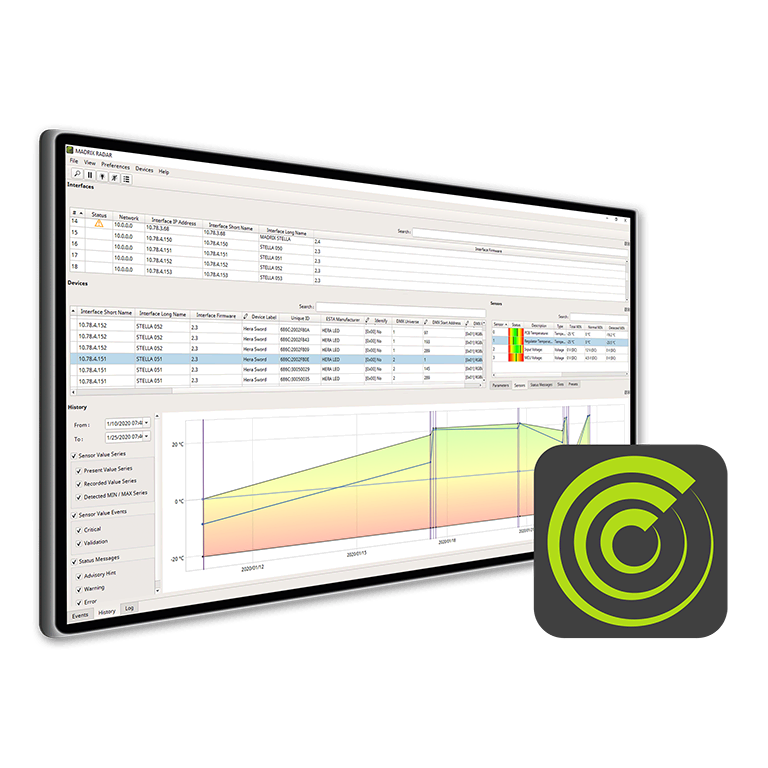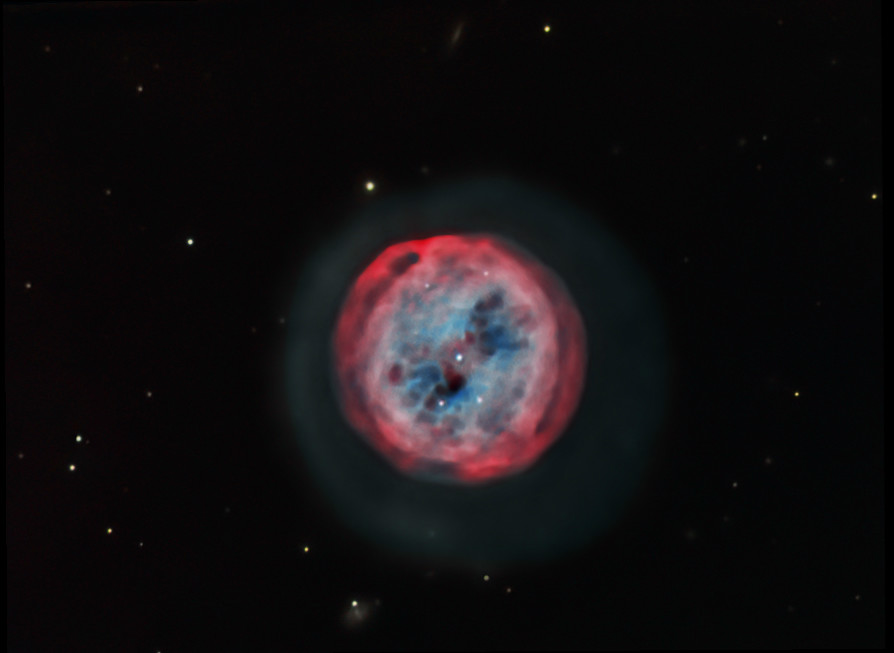Drivers; USB Drivers; Nebula DigiTV USB; Nebula DigiTV USB. Nebula DigiTV USB. Free Nebula Electronics Ltd. Windows 98/2000/XP Version 1.0.0.0 Full Specs. Clicking on the Download Now. Download link for Software and Drivers. To download software and drivers for your Cosmic Byte product please click on the link below. USA: 1-800-988-7973 Mon-Fri 9AM-5PM (PT) International Markets. Download the latest version of these browsers: Google Chrome. Mozilla Firefox. VENGEANCE 5180/5181/5182 Intel ME Driver 1923.12.0.1278. Intel ME Driver.
In our experience as providers of private clouds based on OpenNebula, the single most common request among small and medium enterprises is the deployment of virtual desktops, both in terms of converting existing desktops and moving them to OpenNebula or for the creation of custom environments like computer classrooms for schools. This is, in hindsight, not difficult to explain: a cloud infrastructure brings a set of management advantages that are clearly perceived by end users that are frequently facing IT problems like blue screens, viruses and stability problems. Being able to move from one place to the other while maintaining the desktop VM active, rebooting into a previous snapshot before a virus infection or in general cloning a “good” master VM are substantial advantages especially for smaller companies or public administrations.
We found out that the combination of OpenNebula and KVM for the hypervisor to be especially convenient, and we deployed several small clouds serving small groups (5 to 10) desktops with great success. If you need to start from an existing desktop, the easiest approach is through an external software tool like VMware Converter, with the recommendation to avoid the installation of the usually enabled VMware tools (totally useless within KVM); apart from the use of Converter there are slightly more complex approaches based on tools like clonezilla (a good summary can be found here). The performance of converted machines is however not optimal, due to the lack of the appropriate paravirtualized drivers for I/O and network – so the next task is to convince Windows that it needs to install the appropriate drivers. To do so, download the latest Virtio binary drivers from this site, load the .iso image in OpenNebula and register it as a CDROM image. Then, create a small empty datablock with the following configuration:
Then create a new template for the Windows machine, linking as images the converted Windows disk, the small VD image and the Virtio ISO image. Set the network device as “virtio”, and reboot. After the completion of the boot process, enter into the Windows control panel, system and in the device window you will find a set of unidentified hardware devices- one for the virtual SCSI controller, one for the network card and a few additional PCI devices that are used to control the memory ballooning (the capability to pass real memory usage to the hypervisor, so that the unused memory can be remapped to something more useful). For each unidentified device perform a right click and install the drivers by selecting as source the virtio cdrom. Shutdown the machine and remove from the template the small VD disk and the iso image, and now you have a fast and accelerated Windows image ready for deployment.
Now that we have our VDI raw material, we can think about how to deploy it. In general, we identified three possible approaches:
The simplest approach is simply to load the VM images of each desktop inside of OpenNebula, assign a static IP address to each VM and connect using RDP from a remote device like a thin client or a customized linux distribution. The advantage of this approach is that RDP allows for simple export of local devices and USB ports; recent improvements to the protocol (RDP7 with RemoteFX, used in Windows 7 and 8) allows for fast multimedia redirection and several improved capabilities, already implemented in open source clients like FreeRDP. The simplicity of this approach is however hampered by the fact that this capability works only if Windows boots successfully, and if there is no interference in the login process.If something happens it is necessary to connect out-of-band to the console (for example using the integrated VNC console in Sunstone) and solve any problem that may prevent the successful startup of the virtual machine. This approach is also limited to Windows machines, so that if you have a mix with different operating systems you are forced to connect with different tools.
A more flexible approach is the use of the SPICE protocol. Originally created by Qumranet and released as open source after the acquisition of the company by Red Hat, currently integrated directly within KVM. It supports multimedia, USB redirection and several advanced features; it does have drivers for both Windows (here) and Linux (installing the xorg-video-qxl drivers). We found that several Linux distributions require a small additional file in the /etc/qemu directory called ich9-ehci-uhci-cfg (that can be found here) for USB redirection to work properly; after the addition, add to the Windows template the following libvirt snippet:
to have 3 redirected USB channels. Start the Windows VM and connect through a suitable SPICE client like Spicy, and you will get your connection, audio and all your USB devices properly working:
This approach works quite well – the VM is stable, performance within a LAN is quite good with no visible artifacts. USB redirection is stable, and it is possible to compile KVM with support for Smart Cards, useful for environments like hospitals or law enforcement where a smart card is used for authentication or for digital signatures.
Nebula Driver Download
The last approach is through a separate VM (again, inside of OpenNebula) that perform the task of “application publishing”, in a way similar to Citrix. We use Ulteo, a French software system that provides application publishing and management through an integrated web portal. You can connect Windows servers or linux machines; if you need to publish applications from Windows you can either use the traditional Terminal Server environment, or the much cheaper TSplus application that provides a similar experience. After installing the Ulteo DVD inside of an OpenNebula VM, you end up with a web interface to select the application you want to publish:
After the configuration you simply point your browser to the Ulteo portal interface, and you get a personalized desktop with all your Linux and Windows application nicely integrated.
For a more in-depth presentation, including specific I/O advice on hosting VDI-specific virtual machine, I hope you will join me during the first OpenNebulaConf in Berlin next week. See you there!

MADRIX NEBULA is the versatile LED pixel-tape driver to directly control a wide range of digital LEDs.
Developed and made in Germany.

Downloads
New Second Generation:
2 Ethernet Ports and Daisy-Chain Support!
New firmware 2.0:
Streaming ACN, Channel Offset, Channel Order, Output In Case Of Connection Loss, and more!
Galaxy Driver Download
The MADRIX NEBULA directly connects to your LED pixels. This advanced SPI decoder receives control data over Ethernet network or USB and is built to provide excellent image quality.
SPI Converter & Direct Connection
Directly connect to a wide range of supported LEDs via two 4-pin screw terminals. A signal frequency of up to 24 MHz is available. Supply power over USB or 5 V to 24 V over a 2-pin screw terminal.
Quality Output Of 8 Universes
Each device drives up to 1,360 RGB pixels while ensuring responsive delivery of high-quality signals to each individual LED. You can choose the output protocol separately for each of the two ports.
Art-Net / Streaming ACN / USB
Network data is directly converted to SPI without the need for an additional interface. Reliably distribute data from any compatible software or hardware controller. In addition, simply connect to MADRIX 5 over USB.
Sync Mode & Daisy-Chain Support
MADRIX 5 and MADRIX hardware allow you to fully synchronize Art-Net data for all ports and across devices to get an optimal image on the LEDs without visual interruptions. 2 Ethernet ports allow linearly daisy-chaining several devices together.
Designed For DIN Rails Or Walls
Its non-conductive enclosure and standardized design for 35 mm top-hat rails make mounting quick, easy, and safe. 2 extra brackets are provided for optional wall mounting. 9 indicators quickly show the device status with the option to turn them off.
Invaluable Features
The device is ready within seconds after startup. HTP merging is automatically available for two Ethernet sources. Its firmware is upgradable. Access and change specific device settings using the built-in web configuration page.
Supported LEDs
APA101 / APA102 / APA104 / APA106 / GS8207 / GS8208 / GW6201 / GW6205 / LPD1882S / LPD6803 / LPD8806 / MBI6120 / MY9291 / P9883 / SJ1221 / SK6812 / SK6822 / SM16703 / SM16716 / TLS3001 / TLS3008 / TM1804 / TM1809 / TM1812 / TM1814 / TM1829 / UCS1903 / UCS2903 / UCS512B3 / UCS8904 / UCS9812S / WS2801 / WS2803 / WS2811 / WS2811S / WS2812 / WS2812B / WS2813 / WS2815 / WS2818 / WS2822S / WS2822S Addressing
As of December 2020. Additional LED types will be supported with future firmware updates.
Average Hardware Failure And Return Rate
(Last Update: April 2019)
0.18 %
- 2x OUT (via pluggable screw terminals)
- 2x RJ45 Ethernet ports
- 1x USB port
- 1x Power (via pluggable screw terminal)
- 1x MADRIX NEBULA
- 1x Set of screw terminals (2x 4-pin and 1x 2-pin)
- 1x USB 2.0 cable (certified)
- 2x Wall-mount brackets
- 1x Technical manual / Quick start guide
Technical Specifications
DC 5 V – 24 V; over
A) 2-pin, pluggable screw terminal (12 A max.), B) 5 V USB, C) Port 1 or 2 sourced from LEDs;
6 A max. load per port when supplying through to LEDs
Power Consumption
< 1.5 W (300 mA) during normal operation (500 mA max. fused)
Network Protocols
Art-Net (I, II, 3, 4, incl. ArtSync), Streaming ACN (sACN / ANSI E1.31)
Data Output
8x 512 channels SPI TTL (Maximum output per port: 680 RGB LEDs / 512 RGBW LEDs / 2048 1-channel LEDs)
Supported LEDs
APA101 / APA102 / APA104 / APA106 / GS8207 / GS8208 / GW6201 / GW6205 / LPD1882S / LPD6803 / LPD8806 / MBI6120 / MY9291 / P9883 / SJ1221 / SK6812 / SK6822 / SM16703 / SM16716 / TLS3001 / TLS3008 / TM1804 / TM1809 / TM1812 / TM1814 / TM1829 / UCS1903 / UCS2903 / UCS512B3 / UCS8904 / UCS9812S / WS2801 / WS2803 / WS2811 / WS2811S / WS2812 / WS2812B / WS2813 / WS2815 / WS2818 / WS2822S / WS2822S Addressing
As of December 2020. Additional LED types will be supported with future firmware updates.
Ports
2x ports (Via 2x 4-pin, pluggable screw terminals)
Ethernet
2x RJ45, Auto MDI-X, daisy-chain support, 10/100 MBit/s (Compatible with 1 GBit/s)
Ethernet Switch
1x port, USB 2.0, type-B female socket
Handling
Non-conductive, V-0 flammability rating (UL94 test method), designed for 35 mm DIN-rails or wall mounting
Dimensions
110 g | 132 g incl. screw terminals and wall mounts
Temperature Range
-10 °C to 70 °C (Operating) | -20 °C to 85 °C (Storage)
Relative Humidity
IP20
Certificates

5 years of limited manufacturer's warranty
